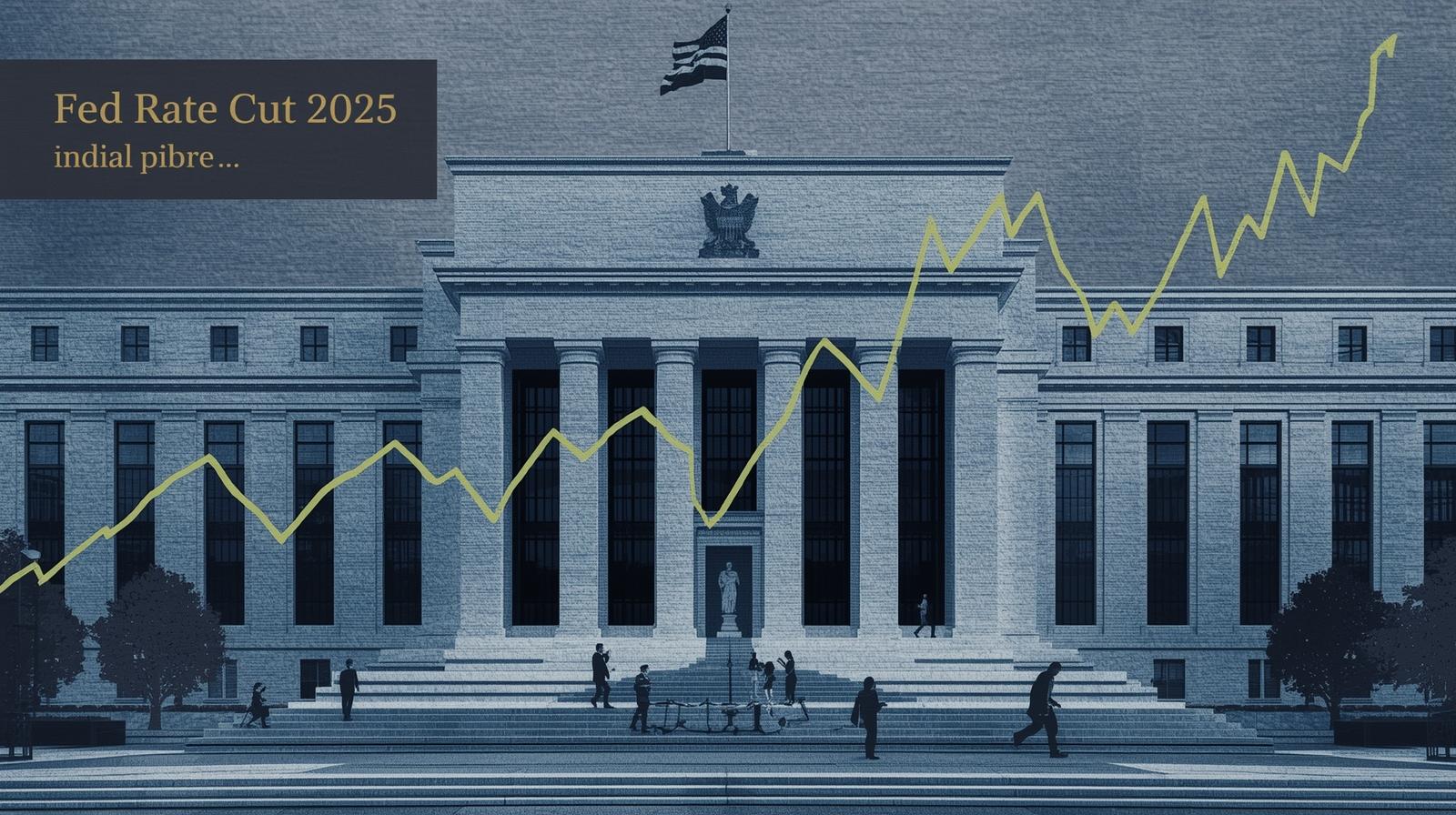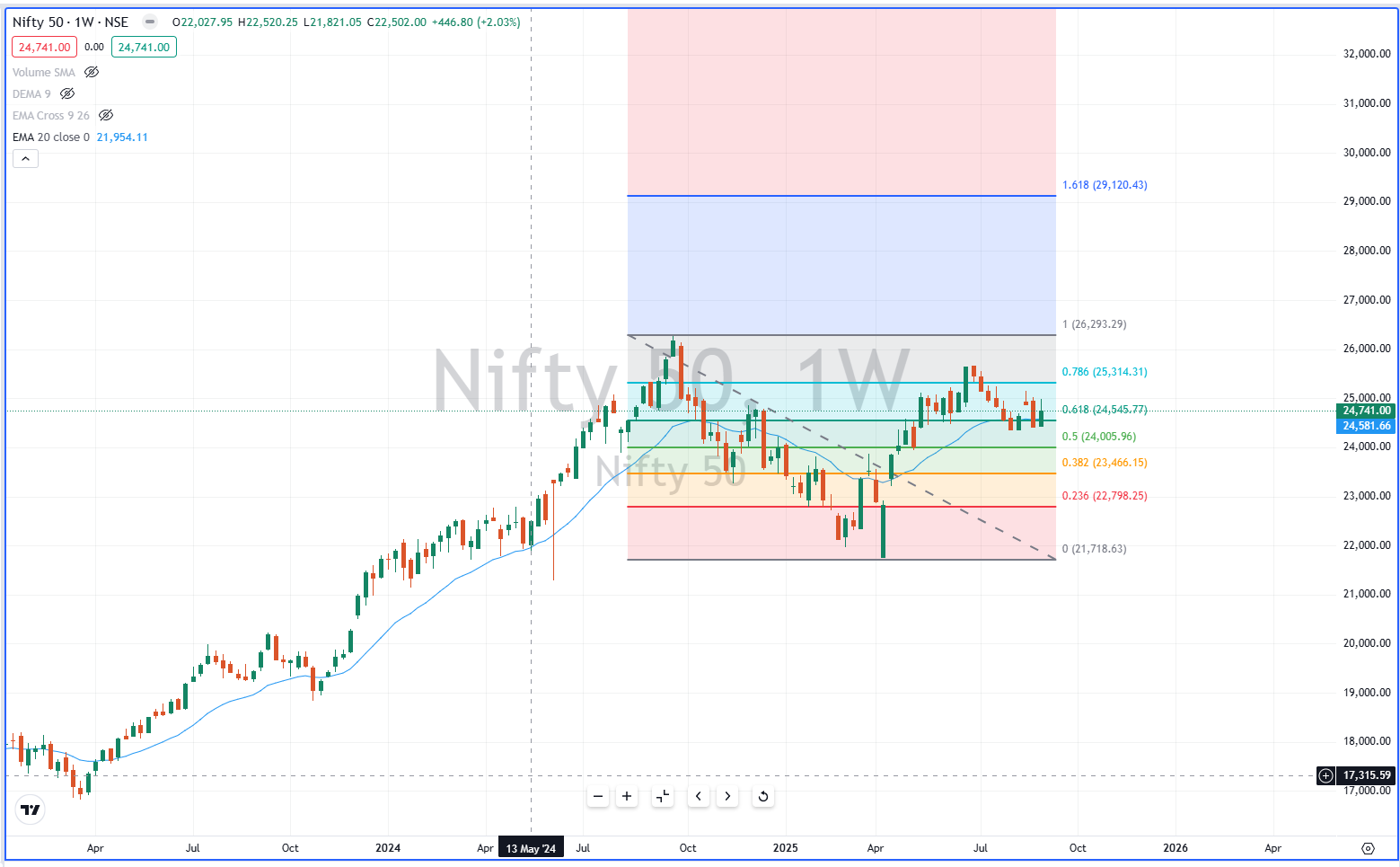📰 Overview: Federal Reserve Announces Another Rate Cut (FED rate cut)
The U.S. Federal Reserve, in its October 29, 2025, meeting, announced a 25-basis-point rate cut, lowering the Federal Funds Rate to a target range of 3.75%–4.00%.
This marks the second rate cut in 2025 following a similar easing in September. The move reflects the Fed’s growing concern over slowing job growth, soft consumer spending, and signs of cooling inflation, after two years of restrictive monetary policy designed to combat post-pandemic inflation.
Chair Jerome Powell emphasized that the decision was data-driven and that future rate cuts would depend on economic indicators such as inflation trends, employment reports, and GDP growth.
📊 Why the Fed is Cutting Rates Again
The Fed’s aggressive tightening cycle between 2022 and 2023 had raised rates to a peak of 5.25%–5.50%, the highest level in two decades. This helped bring down inflation from over 8% in mid-2022 to around 2.6% in 2025.
However, the cost of high rates has been evident in 2025:
- Business investments have slowed
- Home loan and mortgage demand dropped
- Manufacturing and services data show mild contraction
- Job openings have declined steadily since early 2025
- U.S. consumer confidence and spending have softened
Amid these trends, the Fed judged that maintaining a high rate risked stalling the U.S. economy. Thus, the central bank shifted to a measured easing path to balance growth and inflation goals.
📈 Timeline of Key Rate Decisions (2023–2025)
| Year | Policy Action | Rate Range (%) | Remarks |
|---|---|---|---|
| 2023 | Series of rate hikes | 4.75–5.50 | Combat inflation surge |
| 2024 (Sep) | First major cut (–50 bps) | 4.25–4.75 | Inflation stabilizing |
| 2025 (Sep) | Cut (–25 bps) | 4.00–4.25 | Growth concerns rise |
| 2025 (Oct) | Cut (–25 bps) | 3.75–4.00 | Second cut this year |
Analysts from Goldman Sachs and Morgan Stanley now expect two to three more small cuts over the next year, provided inflation remains below 3%.
💬 Fed’s Official Statement Highlights
Key excerpts from the Federal Reserve press release (October 2025) reveal the reasoning:
“Recent indicators suggest that economic activity has slowed. Job gains have moderated, and inflation has eased over the past year. The Committee seeks to support continued economic expansion while ensuring inflation moves sustainably toward 2 percent.”
“Future adjustments to the policy rate will depend on the totality of incoming data, the evolving outlook, and the balance of risks.”
In short — the Fed sees no immediate inflation danger, but it remains cautious about over-stimulating the economy.
🌍 Global Market Reaction
The Fed rate cut rippled across global equity and currency markets within hours of the announcement.
📊 U.S. Markets
- Dow Jones Industrial Average rose over 350 points post-announcement.
- Nasdaq Composite climbed nearly 1.2%, driven by rate-sensitive tech stocks.
- Treasury yields dropped, with the 10-year yield slipping below 4.0%.
💵 Global Currencies
- The U.S. dollar weakened slightly against a basket of major currencies (DXY down 0.4%).
- Emerging-market currencies, including the Indian rupee, gained modestly as investors sought higher yields abroad.
💰 Commodity Markets
- Gold prices rose above $2,400 per ounce as lower rates reduced opportunity costs of holding bullion.
- Crude oil also saw mild gains amid hopes for global growth recovery.
🌐 Global Impact Summary
| Sector | Short-Term Reaction | Long-Term Outlook |
|---|---|---|
| Global Equities | Positive | Depends on inflation data |
| Bonds | Rally (yields fall) | Stabilizing near-term |
| Commodities | Mildly bullish | Gold, oil benefit |
| USD Index | Slightly weaker | Supports EM currencies |
🇮🇳 Impact of Fed Rate Cut on Indian Markets
India’s financial ecosystem is closely tied to U.S. monetary trends through capital flows, exchange rates, and policy alignment.
Let’s analyze each segment in detail:
🏛️ 1. RBI Policy Response
The Reserve Bank of India (RBI) has kept its repo rate at 6.50% since February 2023, focusing on controlling inflation while maintaining growth.
However, the Fed’s shift toward easing opens space for the RBI to consider monetary flexibility in early 2026.
- If inflation in India remains under control (around 4.5–5%), RBI could cut rates by 25 bps in the coming quarters to support domestic growth.
- The Fed’s dovish stance also reduces pressure on the rupee, giving RBI more policy comfort.
In short: the interest rate differential (India-U.S. gap) is widening again, which helps attract foreign inflows into Indian debt and equity.
💹 2. Indian Stock Market Reaction
The immediate effect of the Fed’s October 2025 cut was positive for Indian equities:
- The Nifty 50 gained nearly 0.9% the following day.
- Banking, IT, and FMCG sectors led the rally.
- Rate-sensitive sectors — such as real estate and automobiles — saw higher investor interest due to lower global funding costs.
Why?
Lower U.S. rates mean cheaper global capital. Foreign Institutional Investors (FIIs) can borrow at lower costs and deploy funds in emerging markets like India, where returns remain relatively high.
💵 3. FII Flows & Liquidity
- FIIs have been net buyers in Indian equities since the first Fed cut in September 2025.
- Cumulative inflows in October exceeded ₹24,000 crore, with significant investments in large-cap IT and banking stocks.
- A softer Fed stance generally increases liquidity in global markets, which supports Indian equities, particularly blue-chip and growth-oriented companies.
💱 4. Impact on Indian Rupee
The Fed’s rate cut has a stabilizing effect on the Indian rupee (INR):
| Period | USD/INR Level | Movement |
|---|---|---|
| Pre-cut (Oct 28, 2025) | ₹84.20 | — |
| Post-cut (Oct 30, 2025) | ₹83.65 | INR appreciated ~0.65% |
A weaker dollar globally helps the rupee strengthen slightly, reducing import costs, particularly crude oil.
Additionally, foreign inflows driven by Fed easing can improve India’s forex reserves, supporting currency stability in the coming months.
🏗️ 5. Sector-Wise Impact in India
| Sector | Likely Impact | Explanation |
|---|---|---|
| IT & Software | Positive | U.S. business spending may revive; helps order inflow for Indian IT firms. |
| Banking & Finance | Positive | Improved liquidity and FII inflows strengthen sector outlook. |
| Real Estate & Infrastructure | Positive | Lower global borrowing cost encourages investment. |
| Pharma | Neutral | Currency stability keeps margins balanced. |
| Exporters (Textile, Auto) | Mixed | Slight rupee appreciation may trim export gains. |
Overall, the Nifty and Sensex are expected to maintain bullish momentum as long as Fed remains dovish and inflation stays moderate.
💬 Expert Opinions
Goldman Sachs:
“The Fed’s gradual rate cuts are not about panic; they reflect policy normalization. It’s a shift from restrictive to neutral.”
Kotak Institutional Equities:
“For India, a lower U.S. rate environment is structurally supportive. Expect FII inflows and better risk appetite.”
ICICI Securities:
“RBI will likely maintain its pause in December but could signal easing bias in Q1 2026 if inflation remains benign.”
🧭 Forward Outlook: What Lies Ahead
1️⃣ For the U.S.
- Two more rate cuts in 2026 are possible if inflation continues its downward trajectory.
- The Fed’s focus will remain on sustaining employment while avoiding a hard landing.
2️⃣ For Global Markets
- Liquidity conditions may ease further, boosting equity valuations globally.
- Risks remain: any inflation rebound or geopolitical shock could reverse the easing trend.
3️⃣ For India
- The next 6–9 months may see stronger FII inflows.
- RBI could start mild easing in 2026.
- The rupee may trade in the ₹83–₹85 range, supported by reserves and stable oil prices.
⚠️ Risks & Cautions
- If inflation resurges in the U.S., the Fed could halt rate cuts suddenly.
- A sharp fall in the dollar could trigger volatility in global forex markets.
- India must still manage fiscal deficit and core inflation to ensure domestic stability.
- Excessive FII inflows can lead to short-term overheating in equity valuations.
📊 Summary Table: Fed Rate Cut 2025 – Quick Recap
| Factor | Change / Trend | Impact on India |
|---|---|---|
| Fed Funds Rate | 3.75%–4.00% | Widens interest gap |
| U.S. Inflation | Near 2.6% | Stable global outlook |
| Dollar Index | Slightly weaker | Supports rupee |
| FII Flows | Increasing | Bullish for Indian equities |
| RBI Policy | Neutral to dovish | May ease in 2026 |
| Sensex / Nifty | Rising trend | Supported by global liquidity |
🧩 Conclusion
The Federal Reserve’s October 2025 rate cut confirms the U.S. central bank’s transition from restrictive policy toward supporting sustained growth. While inflation appears under control, the Fed remains cautious to avoid reigniting price pressures.
For India, the policy shift is largely positive:
- Encourages foreign inflows
- Eases currency pressure
- Supports growth-sensitive sectors like IT, banks, and infrastructure
- Provides policy space for RBI to consider easing in 2026
However, investors should remain alert to global macro risks — inflation shocks, crude price spikes, or Fed communication changes could quickly alter sentiment.
As of now, the Indian markets stand to gain from this global liquidity wave — positioning the economy as a key growth destination in an otherwise slowing world.
📌 Stock Market Disclaimer
- Disclaimer: This post is for informational and educational purposes only and does not constitute financial advice or a recommendation to buy/sell any stock or share. Investing in the stock market involves risk. Past performance is not indicative of future results. Always conduct your own research or consult a licensed financial advisor before making investment decisions.
- The information provided on this platform is for educational and informational purposes only. It should not be considered as investment advice, stock recommendations, or financial guidance.
- ⚠️ Stock Market Investments
- Investing in equities, derivatives, mutual funds, and other financial instruments involves market risks, volatility, and the possibility of capital loss.
- Past performance of stocks or indices is not indicative of future returns.
- Always conduct your own research or consult a SEBI-registered financial advisor before making investment decisions.
- ⚠️ IPO (Initial Public Offerings)
- IPO details, issue size, subscription data, and allotment status shared here are based on publicly available information from company filings, stock exchanges, and merchant bankers.
- Investing in IPOs carries risks including listing volatility, business uncertainties, and sector performance dependency.
- Neither acceptance of applications nor allotment guarantees profits. Investors should evaluate their risk appetite before subscribing.
- ⚠️ GMP (Grey Market Premium)
- Grey Market Premium (GMP) is an unofficial and unregulated indicator of expected IPO listing price.
- GMP data is collected from market observers and informal trading circles; it does not have any legal or SEBI recognition.
- GMP values are highly speculative and may differ significantly from actual listing prices. Investors should not rely solely on GMP while taking investment decisions.
- ✅ General Advisory
- We do not provide any buy/sell/hold recommendations.
- Readers and investors are solely responsible for their investment actions and decisions.
- This platform, its authors, and affiliates are not liable for any direct or indirect financial loss arising from the use of this information.
- 🔒 Always invest responsibly and diversify your portfolio.
Open Demat Account
by Mirae Asset (m,Stock)


-
Vodafone Idea Shares Price Plunge 12% After Supreme Court AGR Order — Market Reacts Sharply
Vodafone Idea share price| AGR dues| Supreme Court order| telecom stocks| Vodafone Idea news| Vodafone Idea analysis| Vodafone Idea market…
-
Federal Reserve Rate Cut 2025: Full Report & Impact on Indian Markets (FED Rate Cut)
📰 Overview: Federal Reserve Announces Another Rate Cut (FED rate cut) The U.S. Federal Reserve, in its October 29, 2025,…
-
Nifty today crosses 26,000 mark as markets rally; Bank Nifty, Fin Nifty, and Midcap Nifty gain — October 29, 2025
Nifty today, Bank Nifty, Fin Nifty, Midcap Nifty, stock market update, NSE indices 🟢 Stock Market Update — October 29,…
-
Safecure Services IPO: Full Details, Financials & Market Outlook
Safecure Services IPO., a leading integrated security and facility management company, has launched its SME IPO on the BSE SME…




